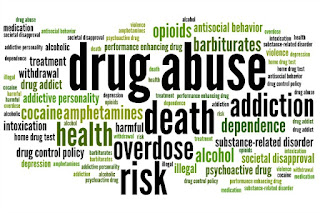Addiction and recovery
By Bob Gaydos
The more things change, the more some other things seem to stay the same. This is particularly true in the field of addiction and substance abuse. With (a) an opioid epidemic sweeping the nation, (b) a growing nationwide movement to legalize the use of marijuana for medicinal and even recreational use, and (c) a growing consensus that the “war on drugs” has failed, a new administration in Washington seems determined to stick to the old, law-and-order approach to addiction.
This suggests that, while we may be in the midst of an unprecedented technological revolution, some of us may still be operating with outdated information. That’s why, from time to time, I devote a column to facts about alcohol and drug addiction. After all, if we’re going to treat it as a war, or as a crusade against a major health issue, we should know what we’re up against.
And, since Americans love quizzes, I’ve put one together to test your addiction IQ. It’s updated from one I offered a few years ago. Quizzes may be fun, but obviously this is a serious issue. The questions and answers are based on reports and other published materials of the National Center on Addiction and Substance Abuse.
What’s your addiction IQ?
- a) 10 million; b) 20 million); c) 40 million; d) 60 million Americans 12 or older have substance abuse problems.
- a) 15%; b) 25%; c) 50%; d) 75% of all high school students have used addictive substances, including cigarettes, alcohol, marijuana or cocaine.
- More than a) 50%; b) 60%; c) 75%; d) 90% of people with a substance problem began smoking, drinking or using other drugs before age 18.
- a) 26%; b) 36%; c) 46%; d) 56% of children under age 18 live in a household where someone age 18 or older is smoking, drinking excessively, misusing prescription drugs or using illegal drugs.
- Seven in 10 people with the chronic diseases of high blood pressure, major depression and diabetes receive treatment. How many people who need treatment for substance problems receive any form of care? a) 1 in 10; b) 2 in 10; c) 3 in 10; d) 5 in 10.
- The National Institute on Alcohol Abuse and Alcoholism defines risky drinking for women as: a) 3; b) 7; c) 10; d) 12 drinks in a week.
- The NIAAA defines risky drinking for men as more than: a) 12; b) 14; c) 16; d) 20 drinks in a week.
- Among people with a prescription drug use problem, nearly: a) 25%; b) 30%; c) 50%; d) 75% have another substance problem.
9. Of every dollar state and federal governments spend on substance problems: a) 2 cents; b) 5 cents; c) 10 cents; d) 25 cents goes to prevention and treatment.
True or false
10. Having a high tolerance (feeling less effect from the substance with continued use) is a sign that the person is not addictive.
11. Because they use substances at lower levels than men, women typically progress from substance use to addiction more slowly than men and experience the health consequences of substance use, such as death, cancer, heart disease and memory problems, less intensely than men.
12. Addiction, substance use and abuse are the largest preventable and most costly health problems facing the U.S. today, responsible for more than 20 percent of deaths in the U.S.
13. Addiction, substance use and abuse cause or contribute to more than 70 other conditions requiring medical care, including cancer, respiratory disease, cardiovascular disease, HIV/AIDS, pregnancy complications, cirrhosis, ulcers and trauma, and account for one-third of all hospital in-patient costs.
14. Total costs to federal, state and local governments of addiction, substance use and abuse are at least $468 billion per year – almost $1,500 for every person in America.
15. Addiction can’t be a disease because it is caused by the individual’s choice to use drugs or alcohol.
Answers: 1(c); 2(d); 3(d); 4(c); 5(a); 6(b); 7(b); 8(d); 9(a).
10: False. High tolerance is a warning sign of a possible substance problem.
11: False. Women generally progress more quickly than men in addiction and suffer more intensely.
12, 13 and 14: True. Just putting out some perspective on the scope of the problem.
15: False, according to National Center on Addiction and Substance Abuse: “While the first use (or early stage use) may be by choice, once the brain has been changed by addiction, most experts believe that the person loses control of his or her behavior. Choice does not determine whether something is a disease. Heart disease, diabetes and some forms of cancer involve personal choices, such as diet, exercise, sun exposure, etc. A disease is what happens in the body as a result of those choices.”
Keep score yourself. The only way to fail is to ignore the issue altogether.
* * *
More info:
www.centeronaddiction.org.
www.niaaa.nih.gov.
bobgaydos.blogspot.com

No comments:
Post a Comment
Please be civil.